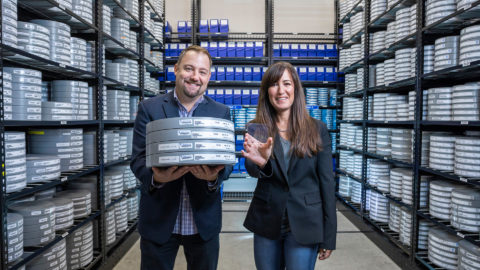Burning Questions: Virtualization (3) – How can security risks be mitigated in virtualized systems?
Virtualization is not inherently insecure. However, most virtualized workloads are being deployed insecurely.
Planning for virtualization projects should always include the information security team, but according to Gartner survey data about 40% of virtualization projects were undertaken without the security team is involvement in initial architecture and planning stages.
Because the hypervisor has oversight over all the workloads running on a physical server, a threat “could result in the compromise of all hosted workloads,” MacDonald notes. Under legacy architectures, a threat to one server would only put one workload at risk, but that is not true in a virtualized data center.
The hypervisor itself also adds to the attack surface. VMware, for example, is revamping its own virtualization architecture to get rid of a Linux-based service console in order to reduce the attack surface from about 2GB to 100MB.
While this is an improvement, customers still have plenty to think about on the security front. Gartner recommends treating the virtualization platform “as the most important IT platform in your data center from a security and management perspective.“
IT shops need to establish policies regarding the consolidation of workloads of different trust levels, and when evaluating new security and management tools favor those that span physical and virtual environments with the same management, policy and reporting framework, Gartner says. IT must be concerned about vulnerabilities in any code installed in the hypervisor layer, including drivers, plug-ins and third-party tools, and keep everything up to date and patched, the report continues.
Even if the virtualization layer is just as secure as previous physical architectures, the tendency to provision more VMs means your footprint is larger and “whenever your footprint grows your security risk expands“, Turner notes. Turner is looking at a few systems management tools, such as Cfengine, Puppet Labs and Chef, to automate the processes of verifying patching, removing old user accounts and ensuring that configuration files haven’t been tampered with. Even relatively simple tasks like running antivirus software can be more complicated after servers have been virtualized.
Harper notes that his staff had to manually change the times of all the weekly scans on Windows Server instances, because otherwise they would all occur at once and cause a too-high I/O load.
Harper says “customers need a combination of new products and procedures to prevent virtualization troubles, because managing VMs as if they are identical to bare-metal machines simply does not work.“. However, Harper and Jim Brewster, a senior IT pro at Sa-bre, are optimistic about security in the virtual world. Physical separation of security zones is giving way to softwarebased security zones, and virtualization management tools could make it difficult for rogue IT admins to alter systems without their actions being logged, Brewster says.
Microsoft and VMware have argued over how many processes should remain in the operating system and how many should be pushed to the hypervisor layer. But Brewster, for one, looks forward to security functionality moving to the hypervisor. “I think you have more visibility and more control over what’s happening, and what is talking to what in the VM space“, Brewster says.
For more information and a personalized IT Solutions business offer, please contact us.
Source:resources.idgenterprise.com



